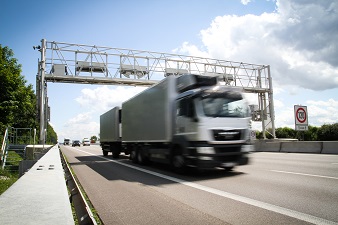Transporting lorry cargo monitoring into the 21st century

Related topics
Innovation Transport Societal Challenges Smart, green and integrated transport Belgium Germany Italy Netherlands Switzerlanddate: 09/06/2015
Project: Vehicular Information System Interface f...
acronym: VISIONS
See also: CORDIS
The VISIONS project targeted the technology necessary for the exchange of data and documents between a lorry and a fleet management or road infrastructure’s information system, such as a tunnel, container terminal or motorway. Information about the status of the vehicle and its cargo – fluid temperatures, brake and engine status, cargo weight and temperature, etc. – is transferred via wireless network to the fleet control centre or to infrastructure management centre at the moment it approaches or enters the infrastructure.
On the basis of this information, the vehicle can be allowed or denied access in real time, or transfer additional documents, for example containing fiscal or customs information. In addition, the information can help determine the best way to assist the lorry in case of an accident, thus maximising efficiency and safety.
To achieve this, the project designed an interface that combines the controller area network of the lorry (the ‘CAN bus’, which allows microcontrollers and devices on board to communicate with each other), a set of sensors installed in the trailer and interconnected via short-range wireless links, the infrastructure information systems interconnected via wireless local area network and a number of remote office information systems. All of these elements work together to extract the vehicle status parameters and information about the cargo status, to exchange data and send appropriate information to the transport company or local administrations.
VISIONS built its innovative system around standard wireless information and communication technologies, which the project’s analyses proved to be reliable with very low data loss rates, even at vehicle speeds of 120 km/h, in combination with existing general packet radio service (GPRS) and global position system (GPS) technologies.
From VISIONS to reality
The project team successfully implemented and tested the full system on a small scale. Over the following 10 years however, the team’s visions have become reality on a larger scale: ‘Click & Find’, a spin-off company set up by the University of Padova, the former VISIONS project coordinator, engineered and brought the VISIONS real-time monitoring system to the market.
Today, it has been taken on board by all Italian oil companies. Several fuel retailers as well as fuel transportation and aircraft fuelling companies in Europe and Africa have also installed the system.
In total, the system is currently monitoring over 1 000 fuel tank lorries, collecting information on their current position, stops, loading/unloading and other operations. It also delivers statistics, enables communication between the controller and the driver, and triggers an alarm if fuel is lost, a hard brake occurs or if drivers exceed their maximum driving hours, for instance.
The system consists of an on-board unit – the VISIONS hub – and the web-services platform T3, and also forms the basis for a platform for real-time dangerous goods monitoring, established by the Italian Ministry of Infrastructure and Transport.
The hub is a small, low-power unit, specifically designed for tankers. It is compatible with a variety of accessories, including electronic meters of all brands, acceleration sensors, digital tachographs and electronic brake systems.
The T3 platform, on the other hand, delivers a continuous flow of data to customers’ information systems, so that they know the position and status of their lorry fleet in real time at any time.
The platform’s flexibility with a view to data exchange interfaces suits a wide spectrum of needs, meeting those of small transport companies with very simple information systems and of large logistics and transportations companies with complex systems alike.
